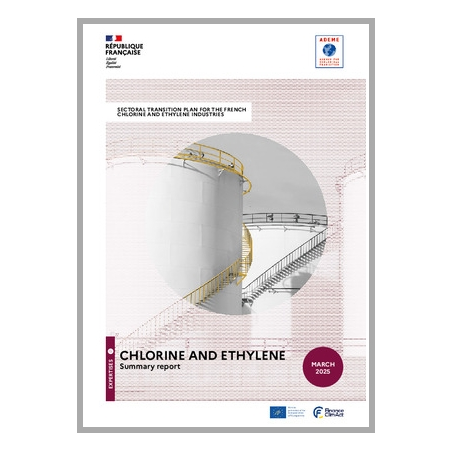Plan de transition sectoriel des industries du chlore et de l'éthylène en France - rapport de synthèse
Synthèse d'expertise
Mis en ligne le : 23/12/2024

Finance ClimAct
The chlorine and ethylene sectors are at the heart of mineral and organic chemistry, and provide materials for many applications including plastic production. Responsible for about 8,5% of French industrial emissions, they are energy-intensive sectors and highly exposed to international competition. Decarbonizing these sectors is therefore strategic, both for reducing emissions and maintaining competitivity. The Chlorine and Ethylene Sectoral Transition Plan proposes the exploration of three contrasting scenarios leading to the objective of -81% reduction in CO₂ emissions by 2050 compared with 2015, the target set by the National Low Carbon Strategy.
The chlorine and ethylene sectors are at the heart of mineral and organic chemistry, and provide materials for many applications including plastic production. Responsible for about 8,5% of French industrial emissions, they are energy-intensive sectors and highly exposed to international competition. Decarbonizing these sectors is therefore strategic, both for reducing emissions and maintaining competitivity. The Chlorine and Ethylene Sectoral Transition Plan proposes the exploration of three contrasting scenarios leading to the objective of -81% reduction in CO₂ emissions by 2050 compared with 2015, the target set by the National Low Carbon Strategy.
Documents associés
Synthèse d'expertise
Mis en ligne le : 23/12/2024